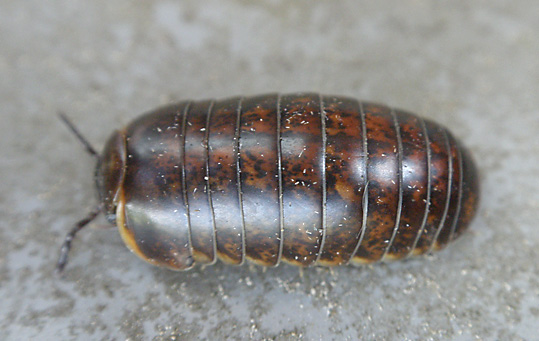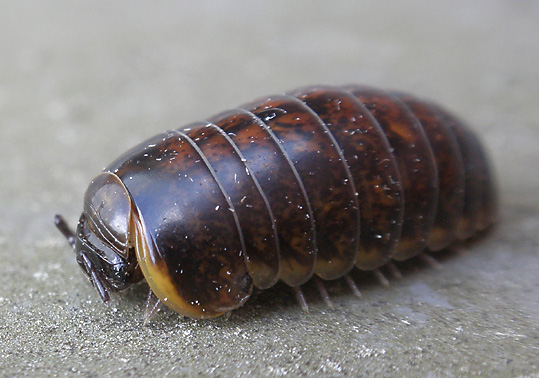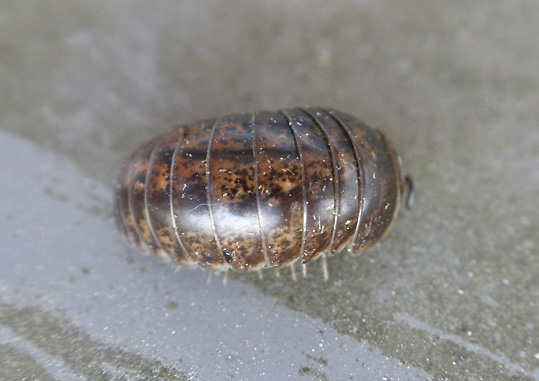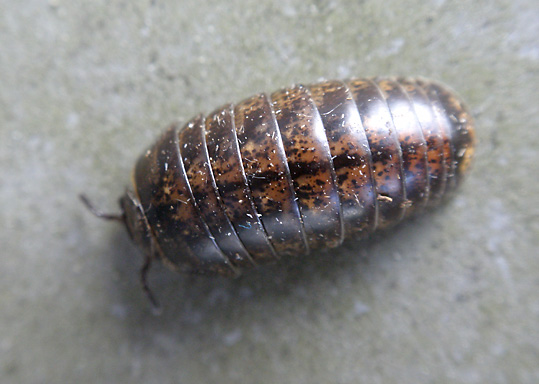|
Glomeris marmorata
Marmorierter Saftkugler
|
|

Specimen
photographed
in Göttingen
(Niedersachsen, Germany) on July 01, 2009.

Specimen photographed
in Göttingen
(Niedersachsen, Germany) on July 01, 2009.

Specimen photographed
in Göttingen
(Niedersachsen, Germany) on July 01, 2009.

Specimen photographed
in Göttingen
(Niedersachsen, Germany) on July 01, 2009.
Synonyms
Glomeris marmorata Brandt, 1833
Glomeris conspersa Koch, 1847
In most publications this species is called
Glomeris conspersa.
However, the name Glomeris marmorata is older
and must take precendence
over the junior synonym Glomeris conspersa.
This species (under its name Glomeris conspersa)
is sometimes regarded
as a color variation of Glomeris
undulata. The idea that Glomeris marmorata
(=Glomeris conspersa) and
Glomeris undulata are
conspecific traces from analyses of allozymes
(Hoess and Scholl 1999a).
However, allozyme analyses are not able to
separate between closely
related species. The species status of both
species is strongly
supported by the
distribution pattern (exclusive in some places
and overlapping in other
places) (see Hoess 2000). If both forms were
allelic polymorphisms,
both forms should be present in the progeny of
single females. To my
knowledge, this has never been reported. I
reject the notion that
Glomeris undulata and Glomeris marmorata are
conspecific and I regard
the two as
bonae species.
The species Glomeris klugii has been described
from Syria and has
recently been regarded as conspecific with
Glomeris undulata (Golovatch
2003). The name Glomeris klugii
is now sometimes used
for Glomeris undulata and/or Glomeris
marmorata/conspersa. In my view, Glomeris
klugii is clearly
different from both Glomeris undulata and
Glomeris marmorata: the
marbled color pattern of Glomeris marmorata is
very characteristic and
different from the cross-striped pattern of G.
klugii. I reject the
notion that G. marmorata and G. klugii are
conspecific. Very clearly,
G. klugii, G. marmorata, and G. undulata belong
to a group of very
closely related species that probably also
contains a number of so far
unrecognized cryptic species.
The type specimens of Glomeris marmorata have
been collected in
"Hercynia" meaning the Harz region. The
specimens from Göttingen
figured above have thus been collected very
close to the type locality
of the species and they match the type specimens
very closely.
|
This page has
been
updated on August 29, 2009
This site is online since May 31, 2005
Copyright © by Nikola-Michael
Prpic-Schäper. All rights reserved.
|
|
|

